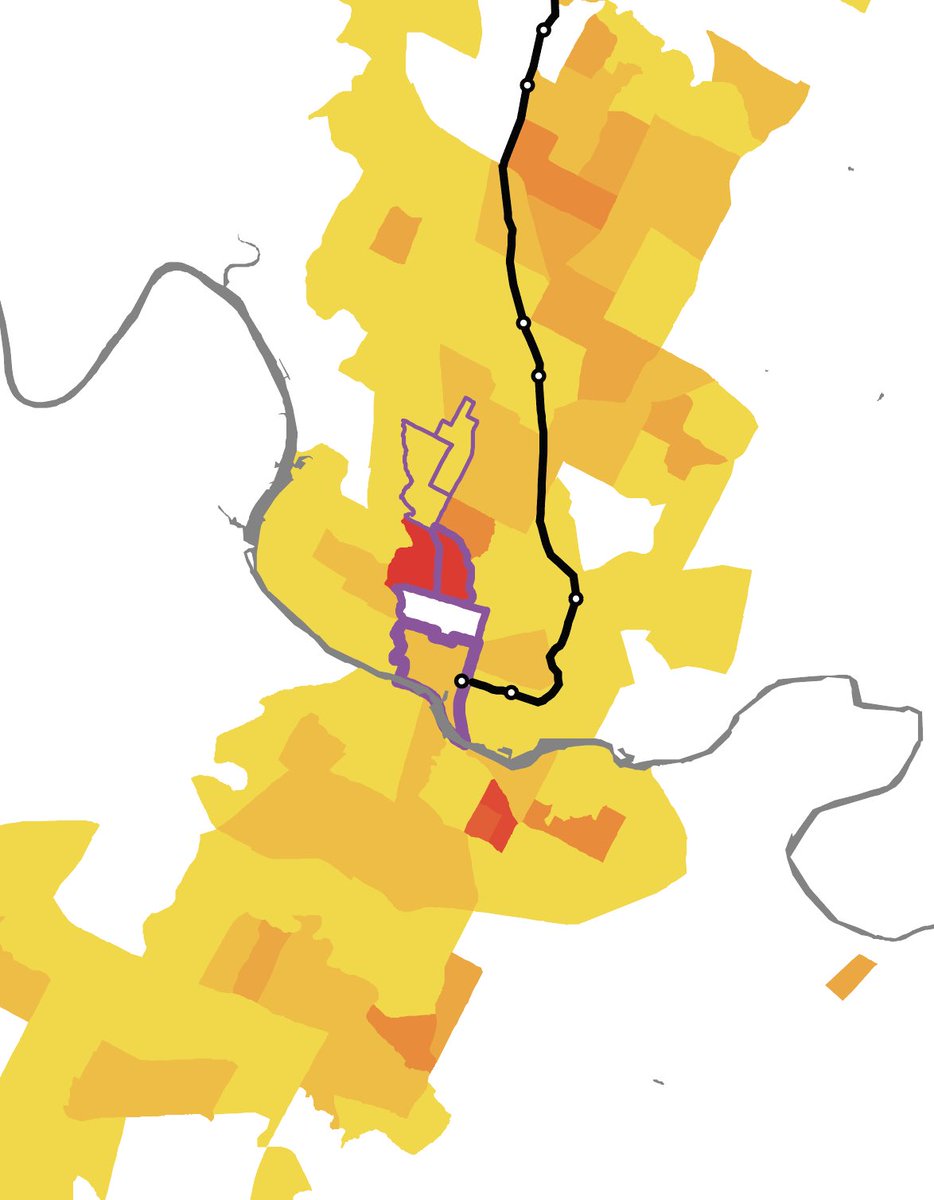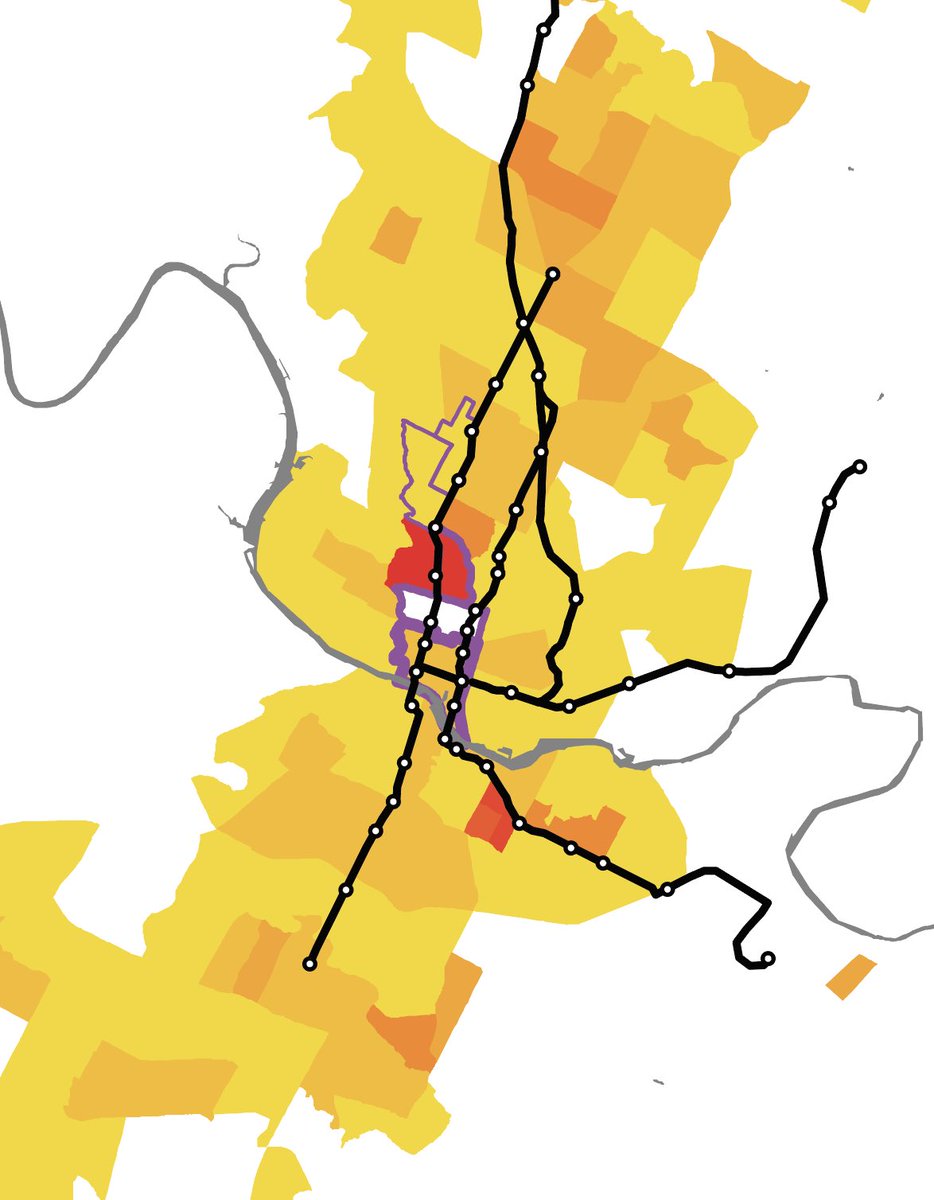In “Trains, Buses, People, I note how the Austin Red Line, as a result of political compromise, misses both the highest concentrations of population (red/orange) and jobs (the purple outlines.)
But the transit plan Austin voters just passed goes right where the people are, with light rail (largely street running, with a short downtown subway) in Austin’s two most important corridors, Congress/Guadalupe/Lamar and Riverside, plus BRT (future rail) on the east side of UT.
These rail lines — connecting to Downtown, the capitol complex, UT, and major hospitals — will link to Austin’s redesigned bus network and rapid bus service, becoming the spines of the entire network. The $7.1 billion plan includes improvements to those routes, too.
In 2000, Austin barely voted down a Congress/Guadalupe/Lamar rail plan, and in 2014 a smaller rail plan was overwhelmingly defeated. This time, though the transit plan (including increased taxes) got 68% of the vote. Good planning and extensive outreach, is a big part of that.
But this is also a political shift, a similar pattern to what we’ve seen in Houston and elsewhere: cities that were once split on support for transit are now strongly in favor, and more ambitious plans do better than small ones. (More on the Austin plan: https://www.capmetro.org/project-connect .)">https://www.capmetro.org/project-c...
Grassroots organizing also played a big role. I n 2000, some environmental groups opposed rail. Today’s there’s a new group of activists that see transit as a part of a more sustainable, more equitable city; they pushed for years to create a good plan, and they campaigned for it.

 Read on Twitter
Read on Twitter



